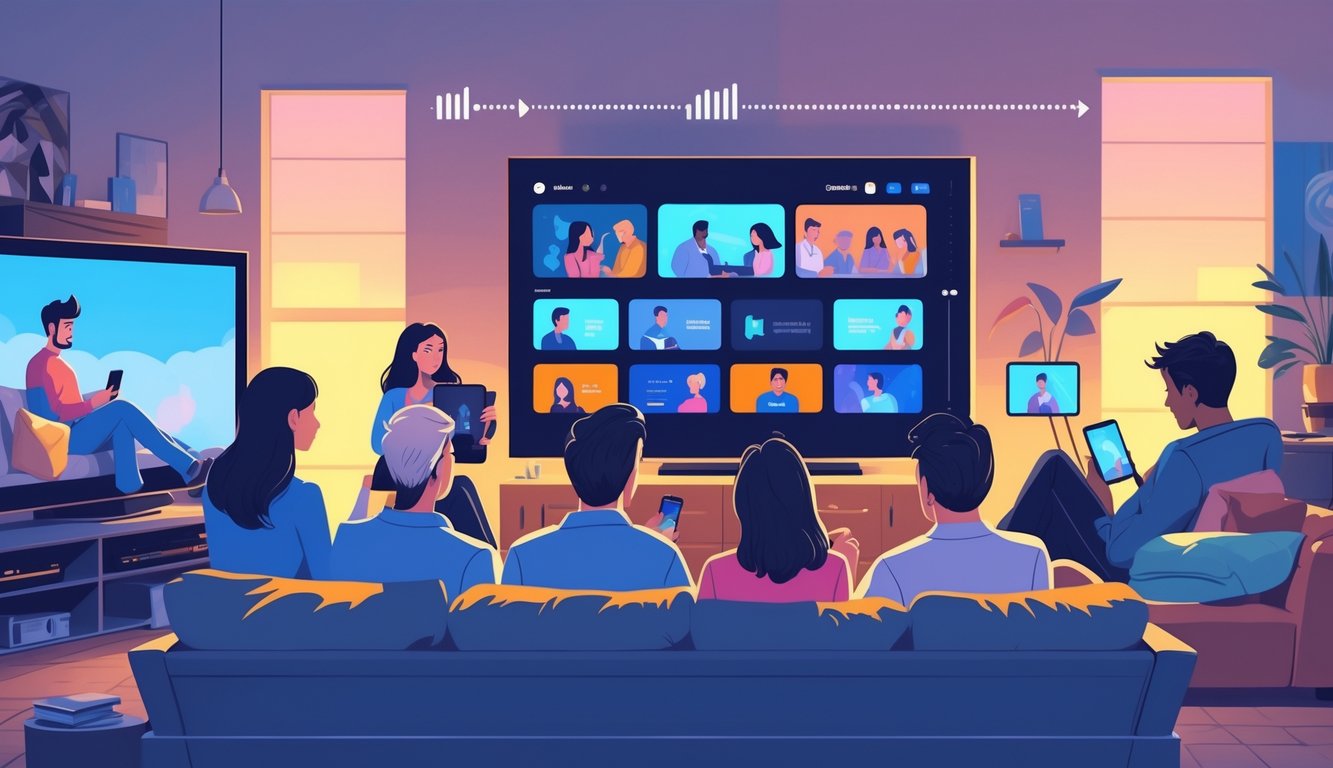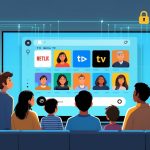
Binge-Watching Culture And On-Demand Viewing

Remember when TV shows dropped once a week? Yeah, me neither. Schedules died the day I realized I could finish Stranger Things in a single Saturday. Now it’s not just “watch when you want”—it’s, “cancel plans, the new season dropped.” I’ve seen friendships nearly implode over spoilers. The old 8pm ritual? Feels prehistoric.
Binge-Watching’s Role In Shaping Preferences
Who’s waiting for cliffhangers anymore? I swipe through six episodes at 2am, and story pacing is just… gone. Northwestern Medicine says binge-watching links to addictive behaviors, but honestly, is it addiction or just wanting control? Not sure it matters—I have queue anxiety either way.
Netflix’s algorithm thinks I only want Scandinavian thrillers now, so my recommendations are a never-ending Denmark loop. That “completionist” urge—just finishing a series, fast—has warped what gets made. Platforms crank out marathon-friendly shows, not slow-burns. Studios? Can’t blame them, really.
Weird side effect: shows blur together, weekends vanish, and social feeds light up for 48 hours after a big drop, then silence. Cultural relevance lasts, what, a week? Maybe less. Is that… progress? I can’t tell.
Decline Of Appointment Viewing And Traditional TV
Flipping through cable now feels like finding a VHS in your grandma’s basement. My mom still records stuff on her old cable box, misses the ending half the time, and I swear it’s become a part-time job. Scheduled TV with ad breaks? No contest against “play now, pause anytime” streaming.
NBC, CBS, all of them, rushed out their own on-demand apps, desperate to copy Netflix. MediaDex says full-season drops fuel binge culture but kill a show’s long-term buzz—nobody’s gossiping about finales for months anymore.
Prime time just disappeared. Teens today probably think TV listings are some kind of folklore. Appointment viewing isn’t dead but feels like stamp collecting—niche, slightly sad, and mostly for people who like waiting. I don’t miss it.
Content Genres Experiencing The Biggest Shifts

Nobody wants to admit it, but genre shifts have turned my streaming queue into a disaster zone. Six mood swings before breakfast. Drama never gave up ground to animation, horror’s acting like it invented binge stress. Parrot Analytics says thrillers in Italy blew up after 2020, sitcoms tanked, and honestly, when’s the last time someone even mentioned a sitcom to me?
Drama And Action’s Continued Dominance
Everyone’s tired, but drama and action keep shoving their way to the top. Algorithms get bored if you don’t click at least one bruised hero before bed. Nielsen’s 2024 data claims US viewers spend 32% of their streaming time on drama, double reality TV, but my uncle still re-watches the same cop show. Go figure.
Studios, desperate for attention, cram more plot into every episode. Marvel drops overlap with spy dramas so much I’ve lost track of who’s fighting who. Netflix dumps budgets into “event” crime thrillers and brags about view spikes in South Korea and Germany. I don’t buy half their PR, but apparently US networks boosted action budgets by 18% since 2023, betting we want predictable chaos over surprise. Maybe they’re right.
Subgenres are a mess—legal drama turns heist, car chase in a period romance. Confusing, but I can’t stop watching.
The Surge In Animation And Horror
Clients keep asking why adult animation and horror are booming when “nobody can handle it.” Licensing conferences are full of execs whispering about Gen Z’s obsession: animated horror and dark comedies get 182% more engagement than live-action pilots (I saw that in a pitch deck, not making it up).
This isn’t about kids’ cartoons—MAPPA Studio tripled global licensing for adult animation in Q1 2025. I watched a big Western brand adapt a gruesome manga and my inbox exploded. Horror’s move from midnight to prime time? That’s TikTok hype cycles, not critical reviews. Meme-ified horror is a goldmine for young creators. Digital analyst Clara Fender told me, “Short-form jump scares convert viewers faster than prestige dramas.” I mean… sure.
Will this last? No clue. Brands are betting big, sometimes animating whole seasons before a pilot even airs, hoping mature animation and hybrid horror will keep people talking—even if the plot’s a mess.
Role Of Technology In Viewer Engagement
If my Wi-Fi drops for five seconds during a Twitch stream, I’m ready to burn the place down. Smart devices have rewired everything—sometimes for the better, sometimes for pure confusion. Nobody just sits and watches cable now; digital platforms chase us, recommend stuff, pop up alerts, and honestly, it’s exhausting.
Smart Devices And Accessibility
Too many remotes, but I only use my phone. Accessibility features—Netflix voice navigation, Hulu’s auto-captions—made me forget prime time ever existed. Apple TV brags about integration, but my niece’s $30 Roku got full accessibility marks from Nielsen 2024, so, whatever. Sometimes “smart” just means “grandma can use it without calling me.”
Voice assistants like Alexa barely understand me, but at least they help my friends with limited vision find stuff. Screen readers, shortcut keys, Microsoft’s adaptive Xbox controller, all that. Not every device gets it right—my friend’s “high-tech” TV crashed just from turning on captions. I laughed, then got mad.
Virtual And Augmented Reality Experiences
Tried VR with an Oculus, forgot where I left my coffee and if I even had legs. VR and AR dump you “inside” NBA games, Netflix stories, Pokémon Go overlays. Immersion is cool, but, uh, can I pee?
Statista 2025 says 60% of Gen Z think VR events are “more engaging” than streams, but it’s never as easy as putting on a headset. Hardware, Wi-Fi, motion sickness—nobody on TikTok warns you. My game dev buddy rants about AR being sci-fi until you actually try to calibrate anything. Holograms break more than they fix.
AR overlays at concerts (Snapchat x BTS, 2024) make everyone feel front row—if you update seven apps and sell your data. Accessibility isn’t just subtitles now; it’s “does my device overheat before the encore?” Still, every time I’m in a virtual escape room with friends across three cities, it’s weirdly communal—if you ignore the lag and the existential dread.



